Influence of Microstructural Changes’ Effects on the Linear and Nonlinear Ultrasonic Parameters of Cast Stainless Steels
Abstract
:1. Introduction
2. Materials and Experiment
3. Results and Discussion
3.1. Morphology and Hardness Test
3.2. Ultrasonic Velocity Tests and Characteristics
3.3. Ultrasonic Attenuation Tests and Characteristics
3.4. Ultrasonic Nonlinearity Tests and Characteristics
4. Conclusions
Author Contributions
Funding
Acknowledgments
Conflicts of Interest
References
- Ravindranath, K.; Malhotra, S.N. The Influence of Aging on The Intergranular Corrosion of 22 Chromium-5 Nickel Duplex Stainless Steel. Corros. Sci. 1995, 37, 121–132. [Google Scholar] [CrossRef]
- Sasakia, S.; Katsumura, T.; Yanagimoto, J. Grain Refinement Technology for Duplex Stainless Steel Using Rapid Cooling Immediately Before Hot Working. J. Mater. Process. Technol. 2020, 281, 116614. [Google Scholar] [CrossRef]
- Sharma, T.; Bonagani, S.K.; Naveen Kumar, N.; Donthula, H.; Mani Krishna, K.V.; Samajdar, I.; Kain, V. Effect of Thermal Aging on Embrittlement of Cr-Mo-V Pressure Vessel Steel. J. Nucl. Mater. 2019, 527, 151817. [Google Scholar] [CrossRef]
- Gutierrez-Vargas, G.; Ruiz, A.; Kim, J.Y.; Lopez-Morelos, V.H.; Ambriz, R.R. Evaluation of Thermal Embrittlement in 2507 Super Duplex Stainless Steel Using Thermoelectric Power. Nucl. Eng. Technol. 2019, 51, 1816–1821. [Google Scholar] [CrossRef]
- Liu, X.; Lu, W.; Zhang, X. Reconstructing the Decomposed Ferrite Phase to Achieve Toughness Regeneration in a Duplex Stainless Steel. Acta Mater. 2020, 183, 51–63. [Google Scholar] [CrossRef]
- Schwarm, S.C.; Mburu, S.; Kolli, R.P.; Perea, D.E.; Ankem, S. Effects of Long-Term Thermal Aging on Bulk and Local Mechanical Behavior of Ferritic-Austenitic Duplex Stainless Steels. Mater. Sci. Eng. A 2018, 720, 130–139. [Google Scholar] [CrossRef]
- Kwon, J.D.; Park, J.C.; Lee, Y.S.; Lee, W.H.; Park, Y.W. An Investigation of the Degradation Characteristics for Casting Stainless Steel, CF8M, under High Temperatures. Nucl. Eng. Des. 2000, 198, 227–240. [Google Scholar] [CrossRef]
- Zhao, Y.; He, B.; Saillet, S.; Domain, C.; Delliou, P.L.; Perez, M.; Qin, R. Anti-Aging Treatment of Nuclear Power Plant Steel. Mater. Sci. Eng. A 2018, 735, 73–80. [Google Scholar] [CrossRef] [Green Version]
- Yu, J.; Zhang, D.; Li, H.; Song, C.; Zhou, X.; Shen, S.; Zhang, G.; Yang, Y.; Wang, H. Detection of Internal Holes in Additive Manufactured Ti-6Al-4V Part Using Laser Ultrasonic Testing. Appl. Sci. 2020, 10, 365. [Google Scholar] [CrossRef] [Green Version]
- Demi, L.; Egan, T.; Muller, M. Lung Ultrasound Imaging, a Technical Review. Appl. Sci. 2020, 10, 462. [Google Scholar] [CrossRef] [Green Version]
- Hong, S.; Yoon, S.; Kim, J.; Lee, C.; Kim, S.; Lee, Y. Evaluation of Condition of Concrete Structures Using Ultrasonic Pulse Velocity Method. Appl. Sci. 2020, 10, 706. [Google Scholar] [CrossRef] [Green Version]
- Schmelt, A.S.; Marhenke, T.; Hasener, J.; Twiefel, J. Investigation and Enhancement of the Detectability of Flaws with a Coarse Measuring Grid and Air Coupled Ultrasound for NDT of Panel Materials Using the Re-Radiation Method. Appl. Sci. 2020, 10, 1155. [Google Scholar] [CrossRef] [Green Version]
- Kim, C.S.; Park, I.K.; Jhang, K.Y. Nonlinear Ultrasonic Characterization of Thermal Degradation in Ferritic 2.25Cr–1Mo Steel. NDT E Int. 2009, 42, 204–209. [Google Scholar] [CrossRef]
- Chen, J.; Xu, Z.; Yub, Y.; Yao, Y. Experimental Characterization of Granite Damage Using Nonlinear Ultrasonic Techniques. NDT E Int. 2014, 67, 10–16. [Google Scholar] [CrossRef]
- Matlack, K.H.; Bradley, H.A.; Thiele, S.; Kim, J.Y.; Wall, J.J.; Jung, H.J.; Qu, J.; Jacobs, L.J. Nonlinear Ultrasonic Characterization of Precipitation in 17–4PH Stainless Steel. NDT E Int. 2015, 71, 8–15. [Google Scholar] [CrossRef] [Green Version]
- Li, N.; Sun, J.; Jiao, J.; Wu, B.; He, C. Quantitative Evaluation of Micro-Cracks Using Nonlinear Ultrasonic Modulation Method. NDT E Int. 2016, 79, 63–72. [Google Scholar] [CrossRef]
- Wang, X.; Wang, X.; Niu, X.G.; Xiao, D.M.; Hu, X.L. Application of Nonlinear Ultrasonic Technique to Characterize the Creep Damage in ASME T92 Steel Welded Joints. NDT E Int. 2018, 98, 8–16. [Google Scholar] [CrossRef]
- Jhang, K.Y. Nonlinear Ultrasonic Techniques for Nondestructive Assessment of Micro Damage in Material: A Review. Int. J. Precis. Eng. Manuf. 2009, 10, 123–135. [Google Scholar] [CrossRef]
- Hong, X.; Liu, Y.; Lin, X.; Luo, Z.; He, Z. Nonlinear Ultrasonic Detection Method for Delamination Damage of Lined Anti-Corrosion Pipes Using PZT Transducers. Appl. Sci. 2018, 8, 2240. [Google Scholar] [CrossRef] [Green Version]
- Matlack, K.H.; Kim, J.Y.; Jacobs, L.J.; Qu, J. Review of Second Harmonic Generation Measurement Techniques for Material State Determination in Metals. J. Nondestr. Eval. 2015, 34, 273. [Google Scholar] [CrossRef]
- Freitas, V.L.A.; Normando, P.G.; Albuquerque, V.H.C.; Silva, E.M.; Silva, A.A.; Tavares, J.M.R.S. Nondestructive Characterization and Evaluation of Embrittlement Kinetics and Elastic Constants of Duplex Stainless Steel SAF 2205 for Different Aging Times at 425 °C and 475 °C. J. Nondestr. Eval. 2011, 30, 130–136. [Google Scholar] [CrossRef]
- Vijayalakshmi, K.; Muthupandi, V.; Jayachitra, R. Influence of Heat Treatment on the Microstructure, Ultrasonic Attenuation and Hardness of SAF 2205 Duplex Stainless Steel. Mater. Sci. Eng. A 2011, 529, 447–451. [Google Scholar] [CrossRef]
- Ohtani, T.; Ogi, H.; Minami, Y.; Hirao, M. Ultrasonic attenuation monitoring of fatigue damage in low carbon steels with electromagnetic acoustic resonance (EMAR). J. Alloys Compd. 2000, 310, 440–444. [Google Scholar] [CrossRef]
- Cai, Y.Q.; Sun, J.Z.; Liu, C.J.; Ma, S.W.; Wei, X.C. Relationship between Dislocation Density in P91 Steel and Its Nonlinear Ultrasonic Parameter. J. Iron Steel Res. Int. 2015, 22, 1024–1030. [Google Scholar] [CrossRef]
- Xiang, Y.; Zhu, W.; Liu, C.J.; Xuan, F.Z.; Wang, Y.N.; Kuang, W.C. Creep Degradation Characterization of Titanium Alloy Using Nonlinear Ultrasonic Technique. NDT E Int. 2015, 72, 41–49. [Google Scholar] [CrossRef]
- Gutierrez-Vargas, G.; Ruiz, A.; Kim, J.Y.; Jacobs, L.J. Characterization of Thermal Embrittlement in 2507 Super Duplex Stainless Steel Using Nonlinear Acoustic Effects. NDT E Int. 2018, 94, 101–108. [Google Scholar] [CrossRef]
- Li, S.L.; Zhang, H.L.; Wang, Y.L.; Li, S.X.; Zheng, K.; Xue, F.; Wang, X.T. Annealing Induced Recovery of Long-Term Thermal Aging Embrittlement in a Duplex Stainless Steel. Mater. Sci. Eng. A 2013, 564, 85–91. [Google Scholar] [CrossRef]
- Jang, H.; Hong, S.; Jang, C.; Lee, J.G. The Effects of Reversion Heat Treatment on the Recovery of Thermal Aging Embrittlement of CF8M Cast Stainless Steels. Mater. Des. 2014, 56, 517–521. [Google Scholar] [CrossRef]
- Fujii, K.; Fukuya, K. Effects of Radiation on Spinodal Decomposition of Ferrite in Duplex Stainless Steel. J. Nucl. Mater. 2013, 440, 612–616. [Google Scholar] [CrossRef]
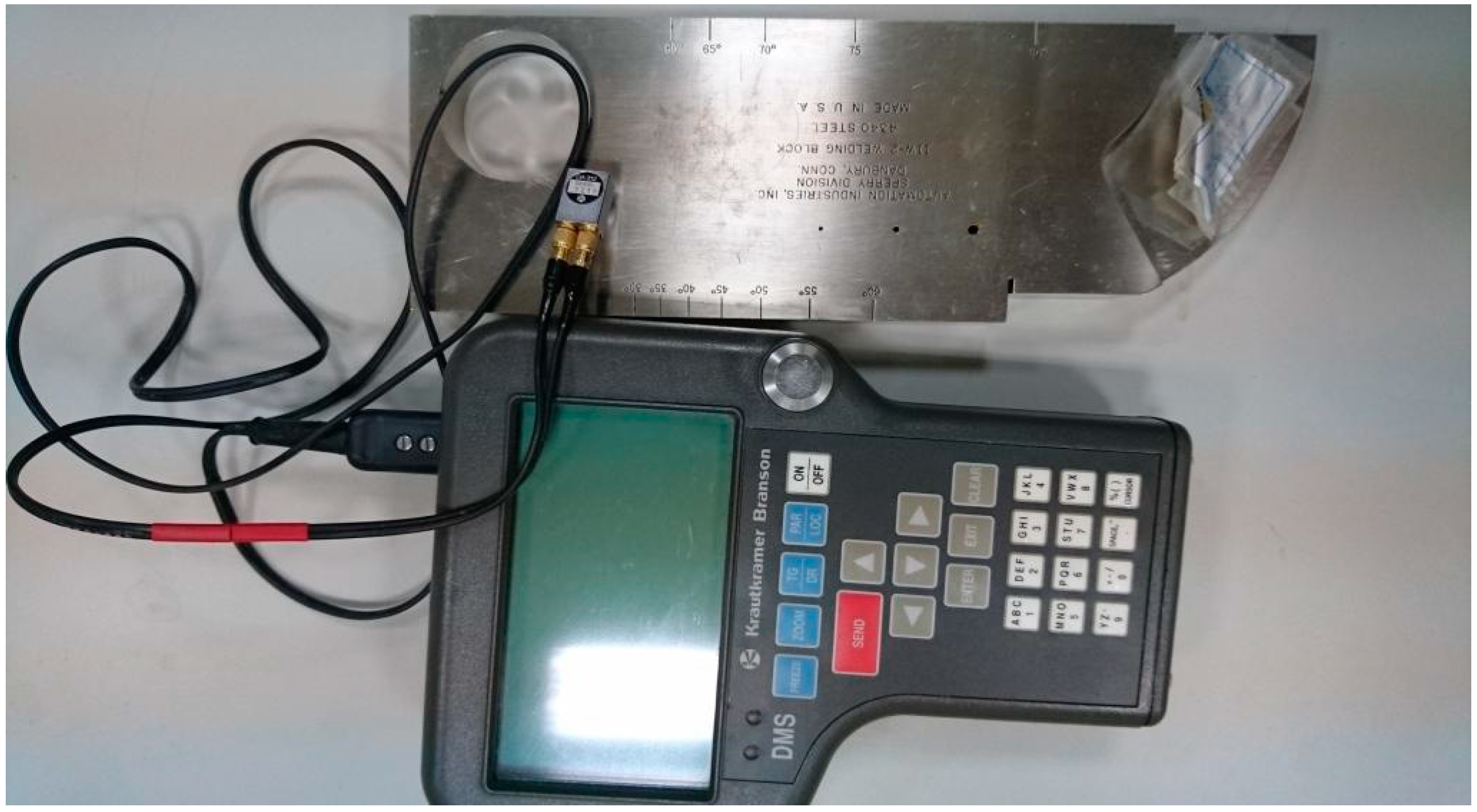
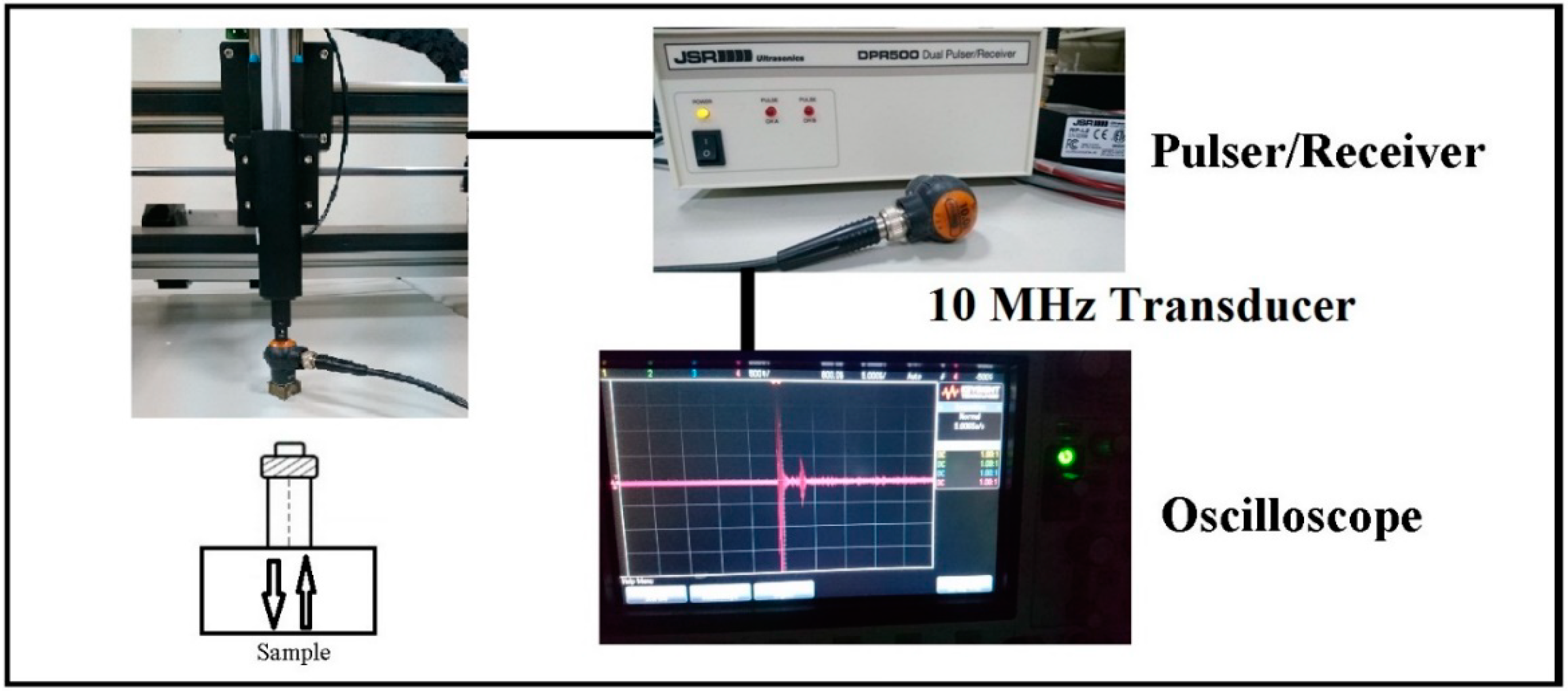
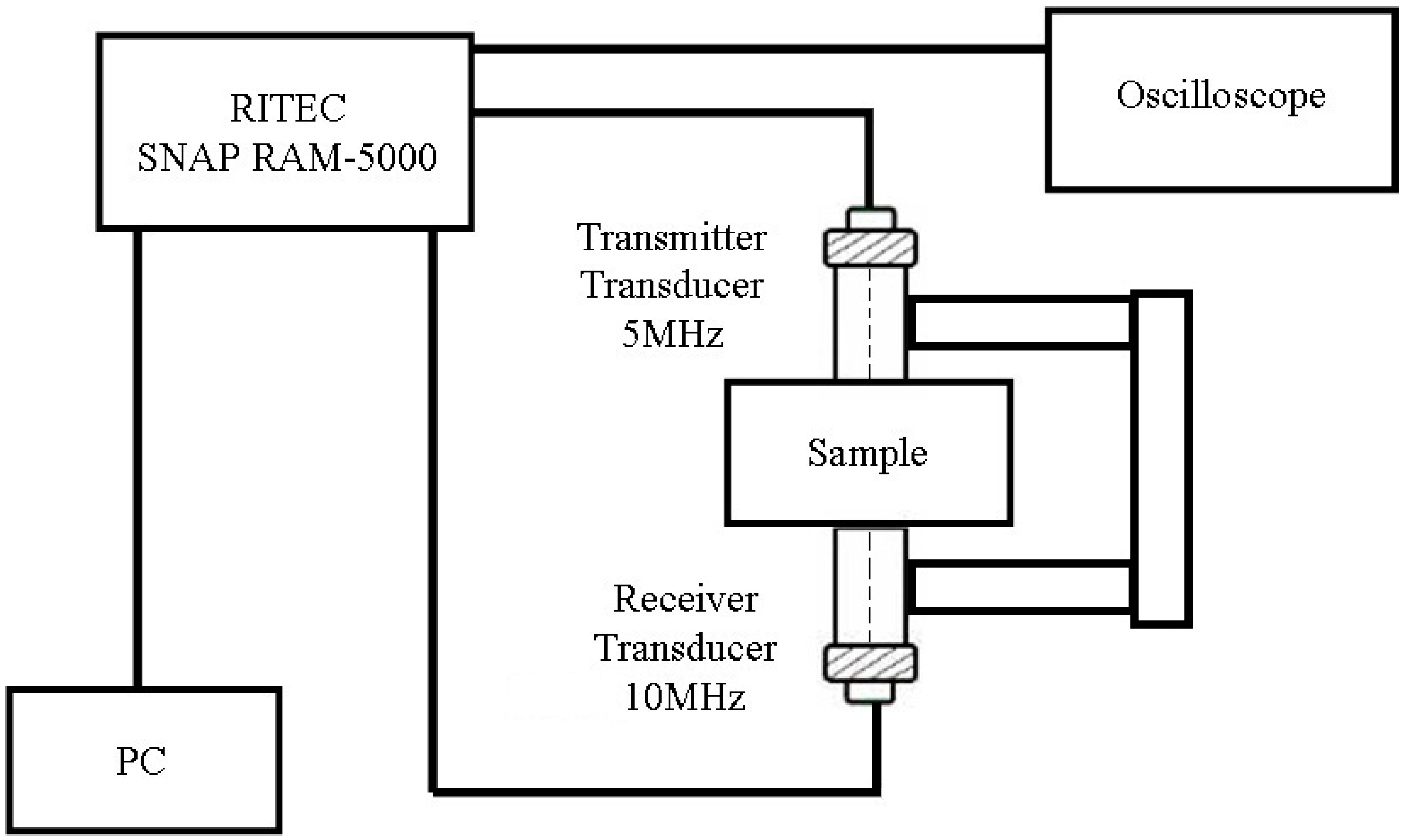
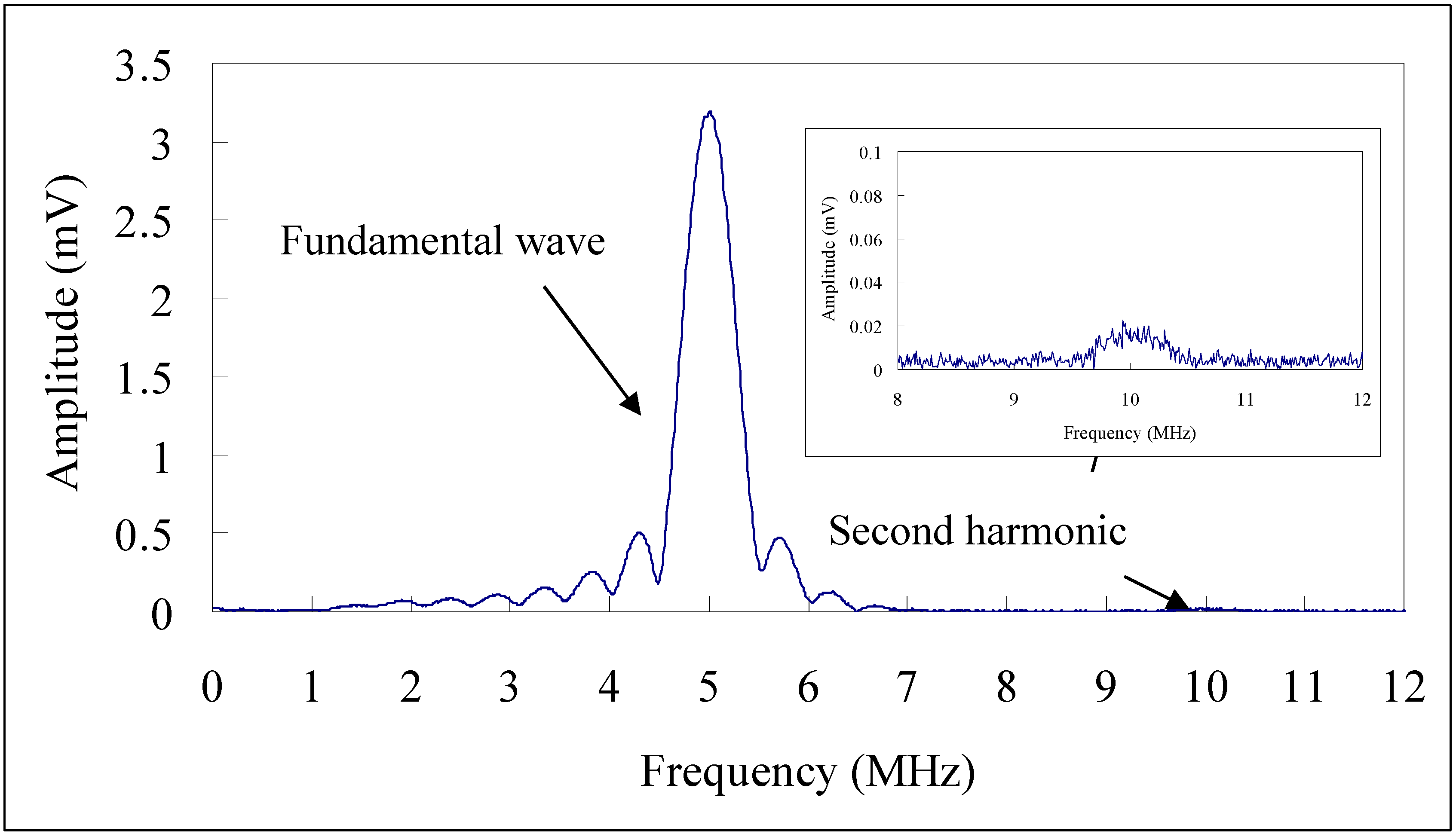
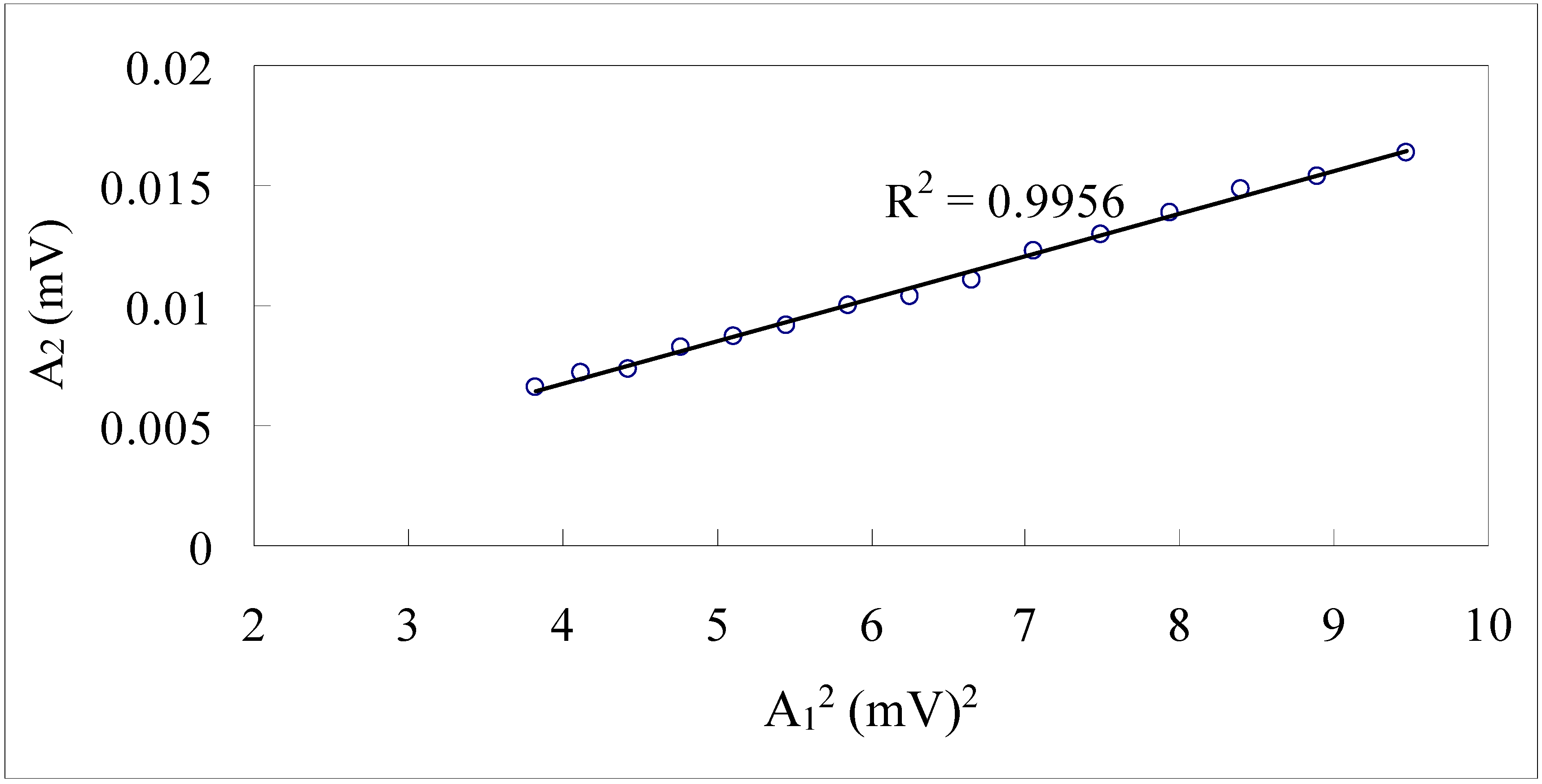
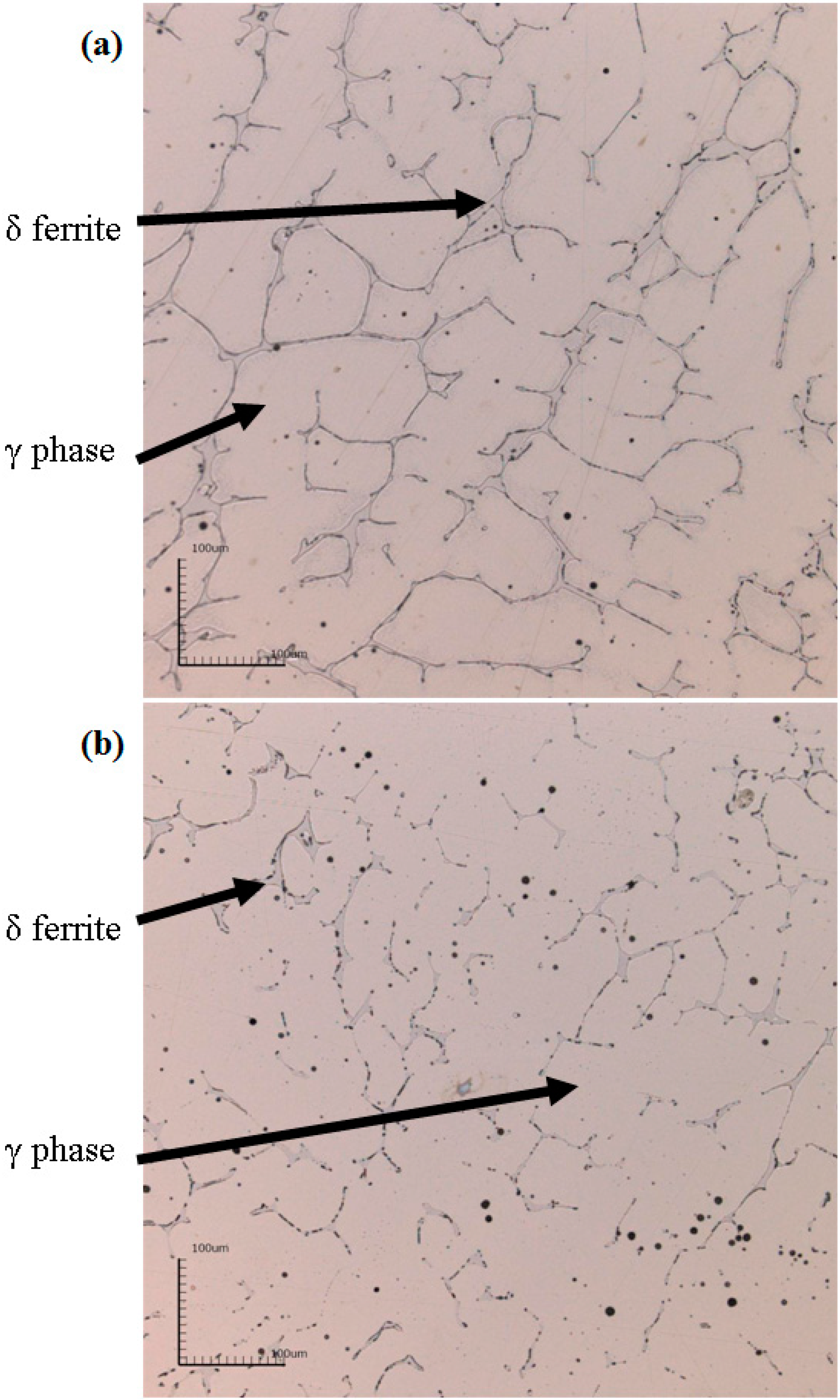

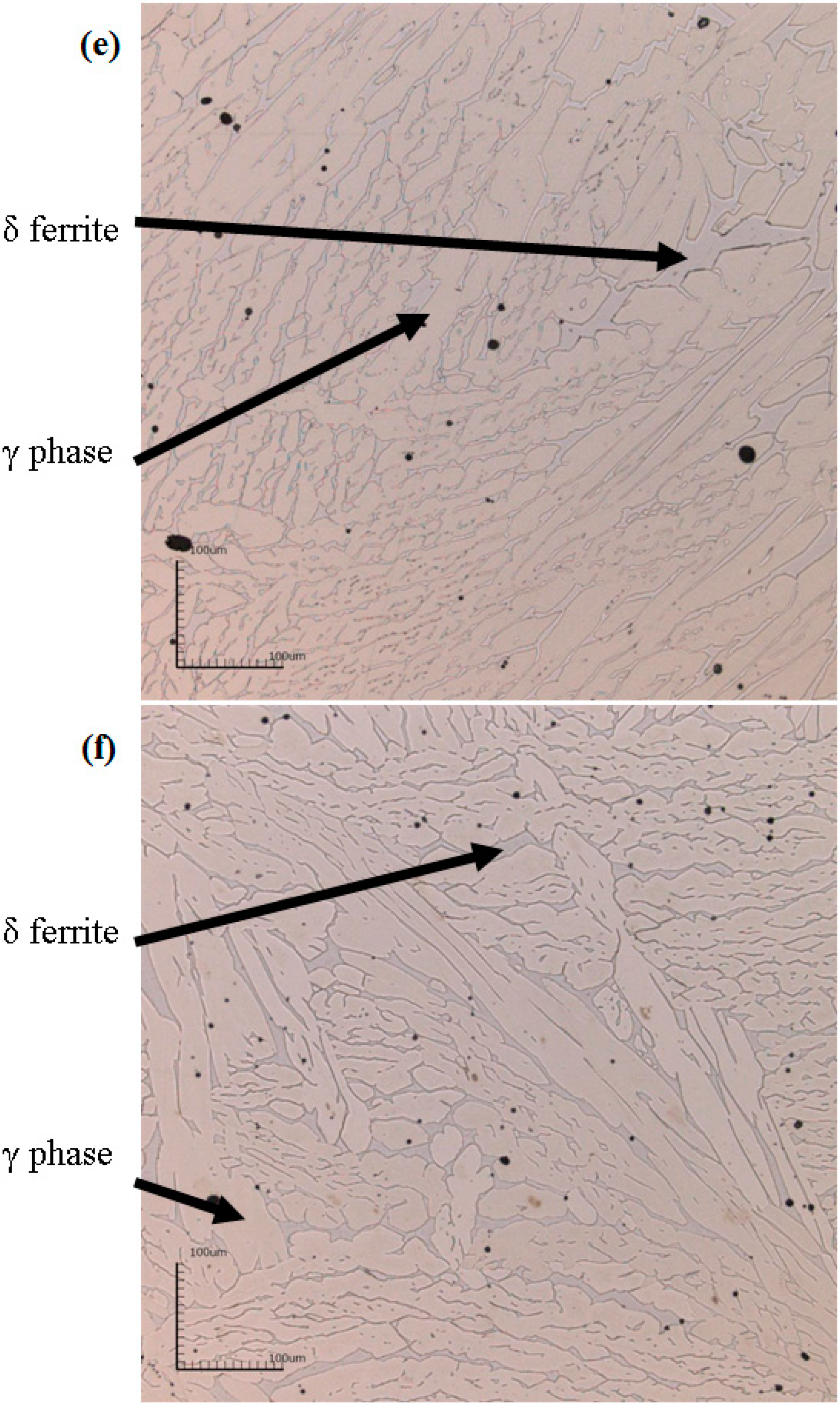
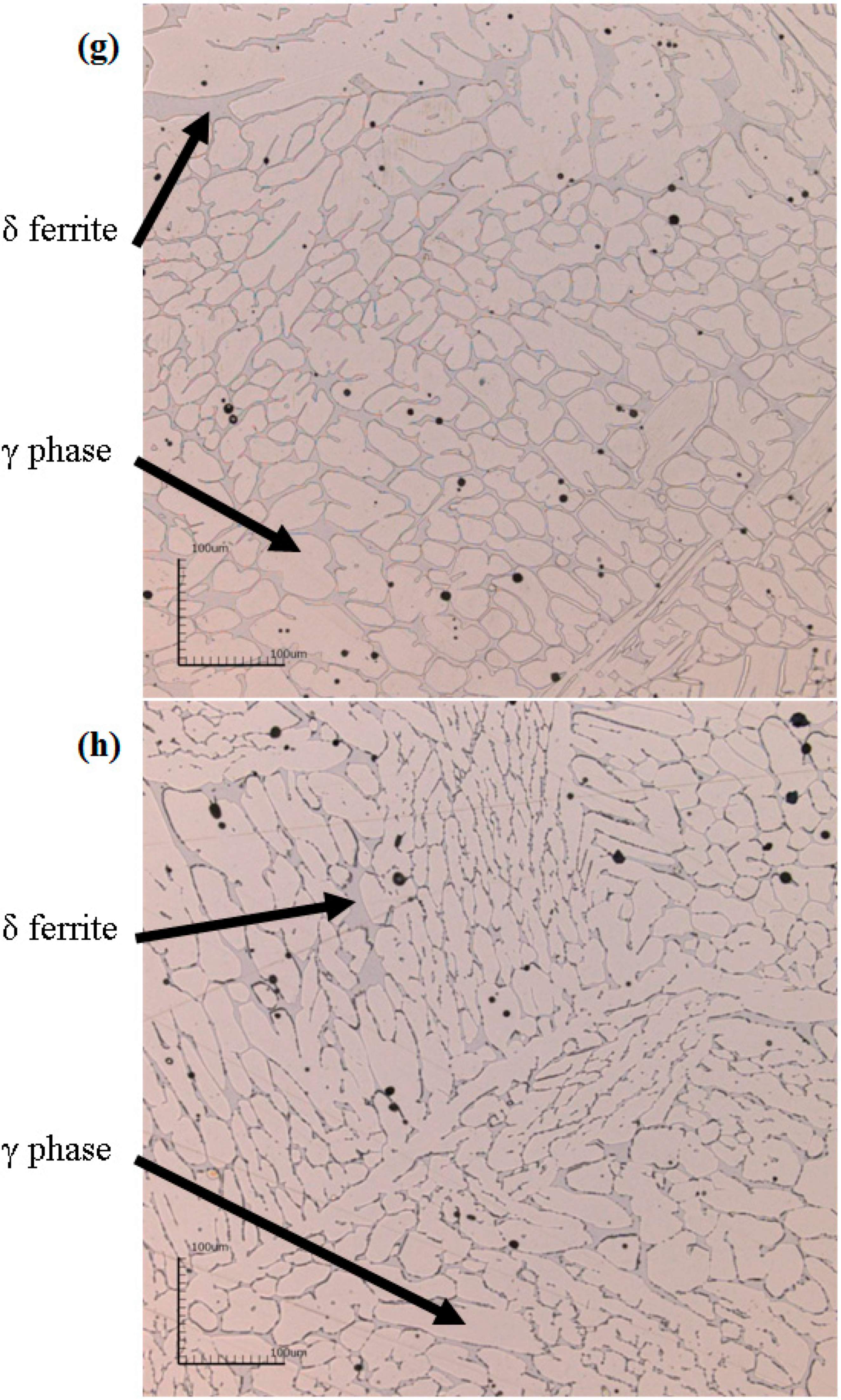
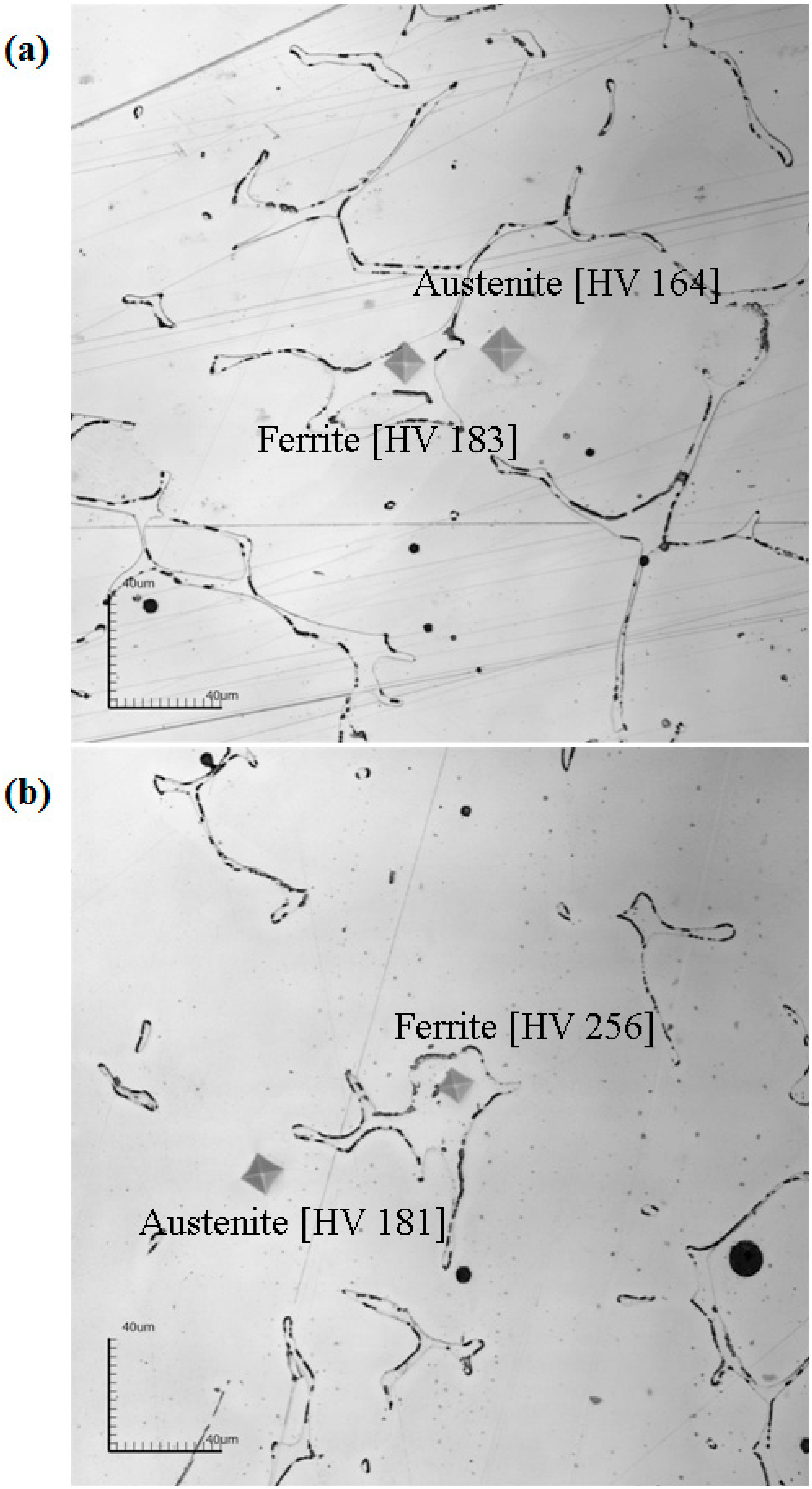
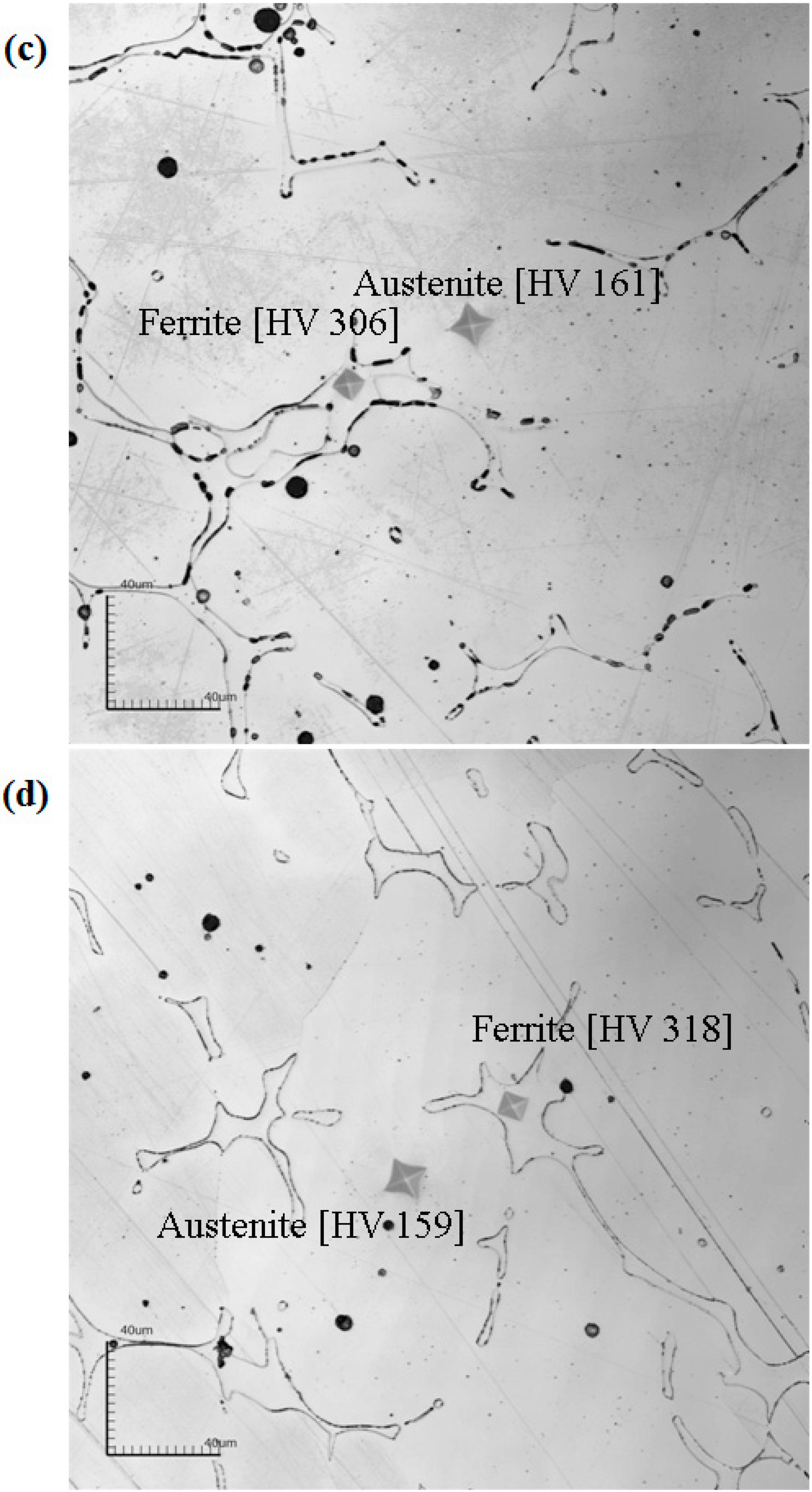
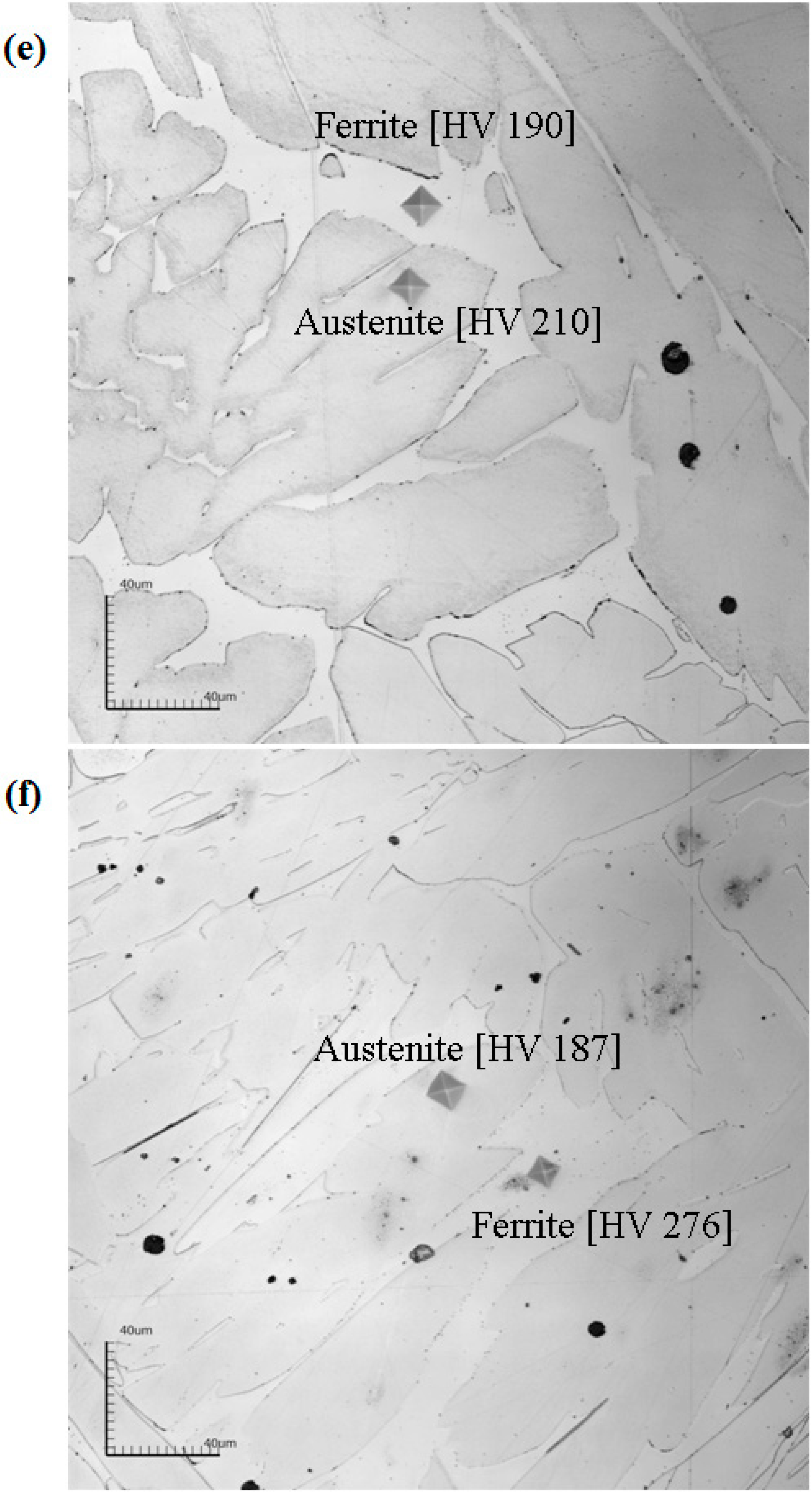
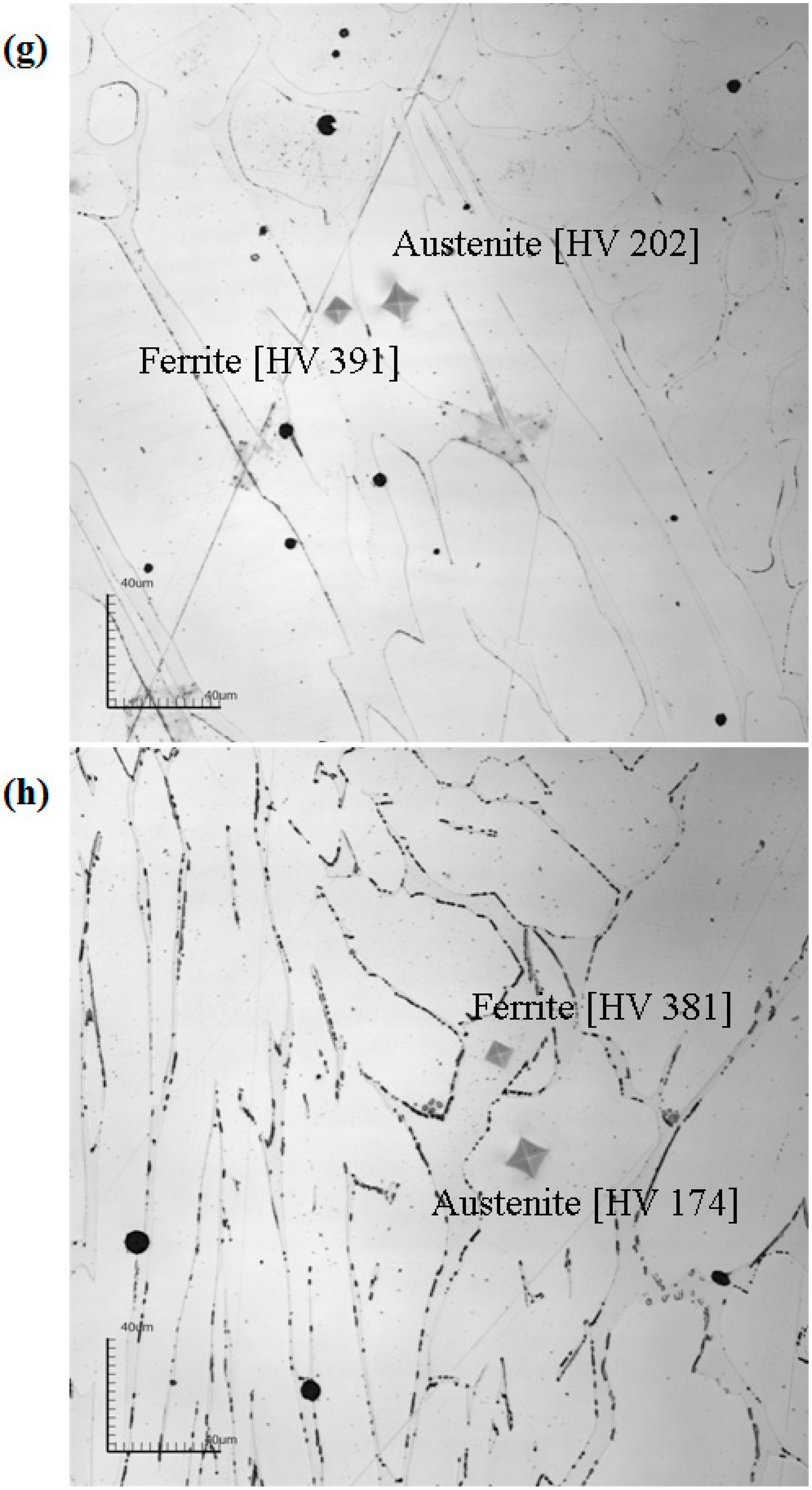

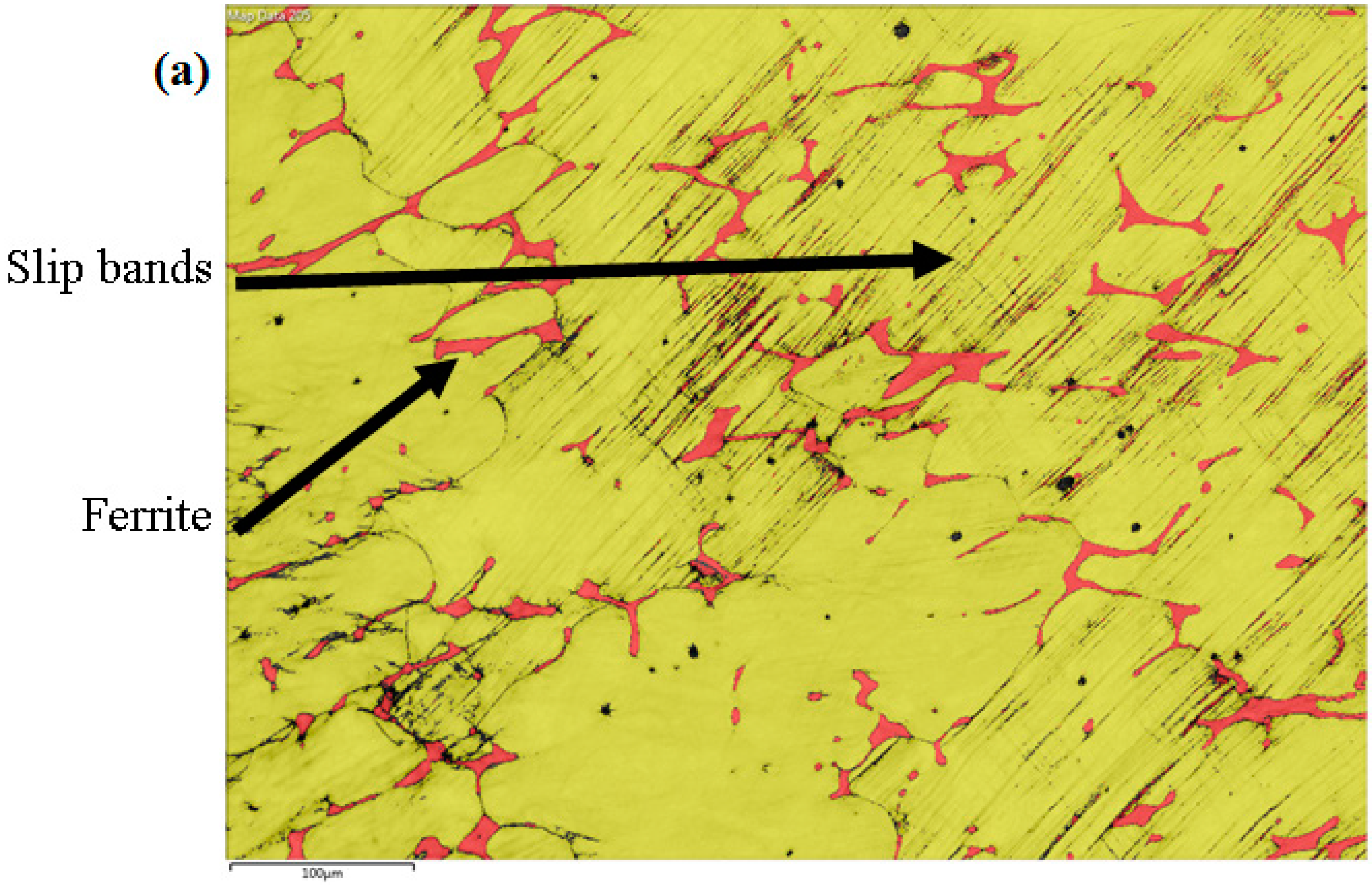

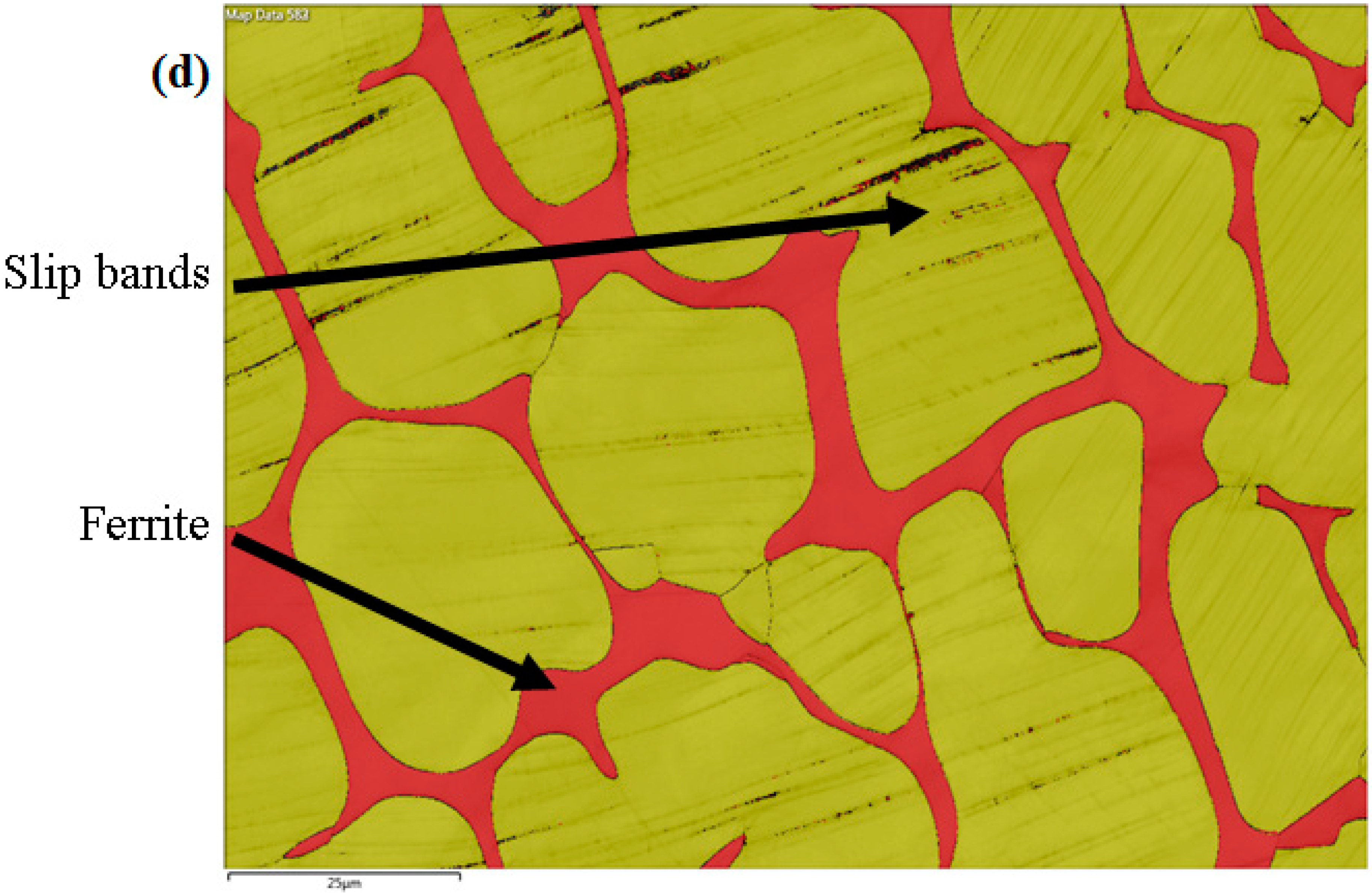


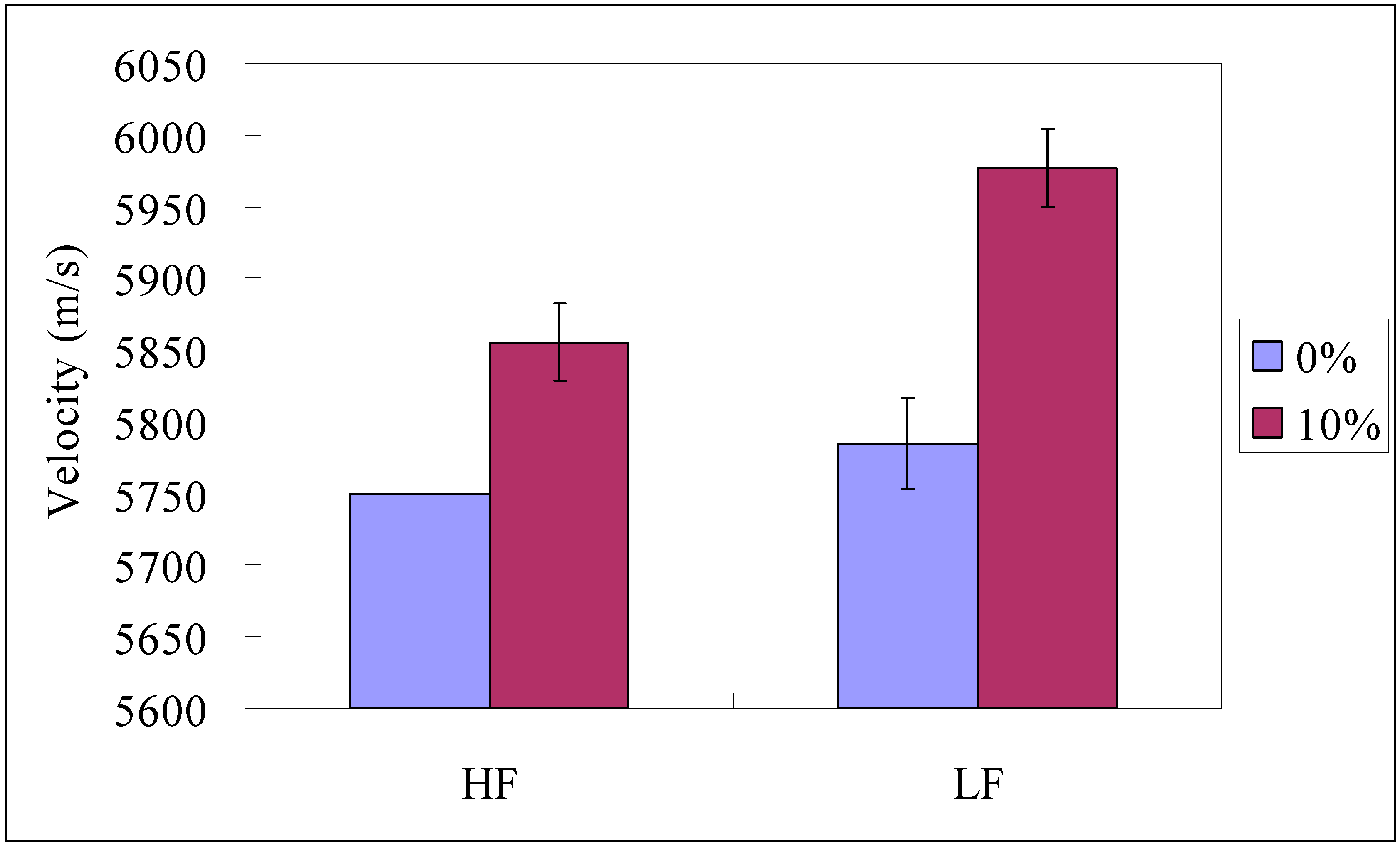
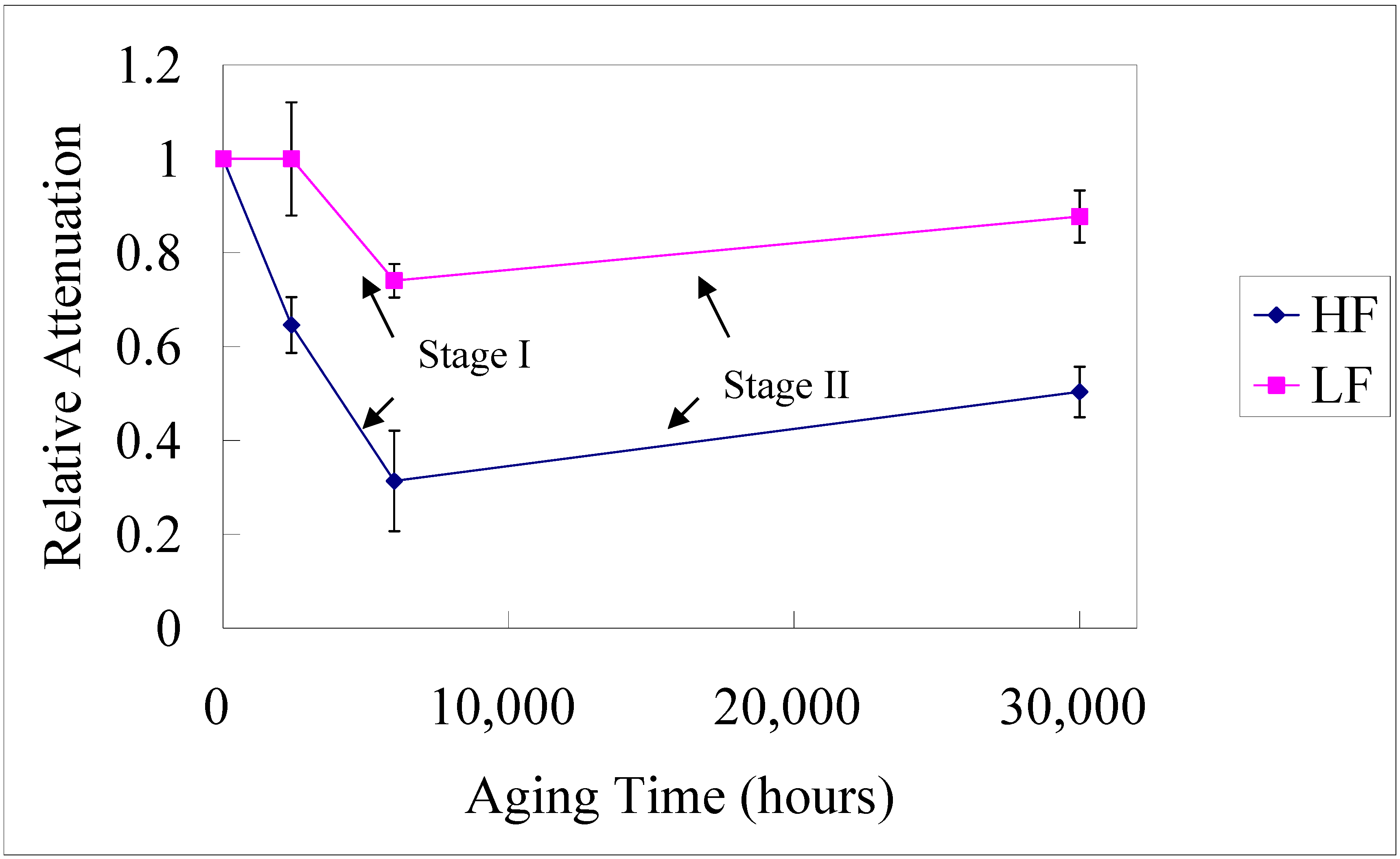
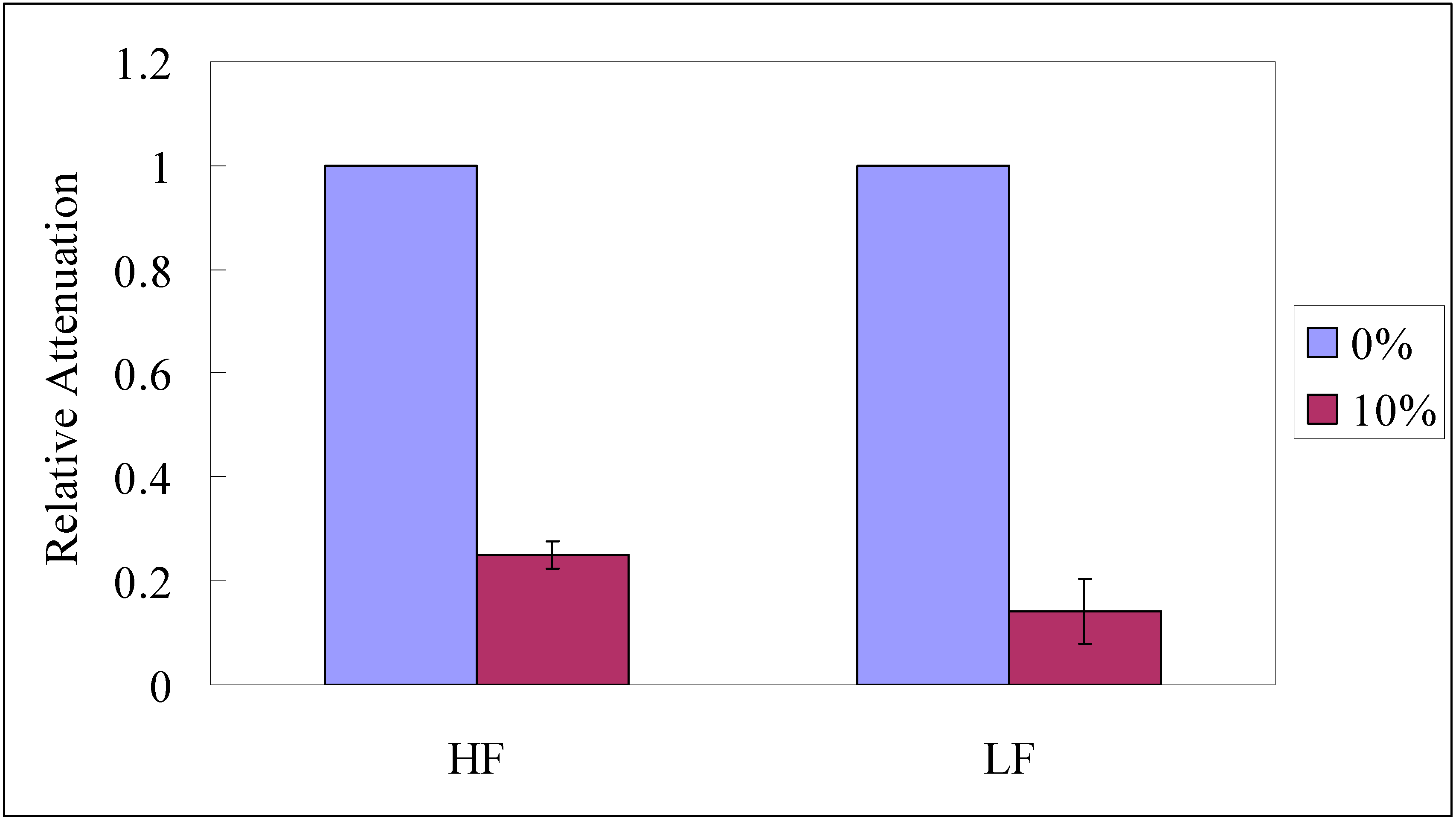
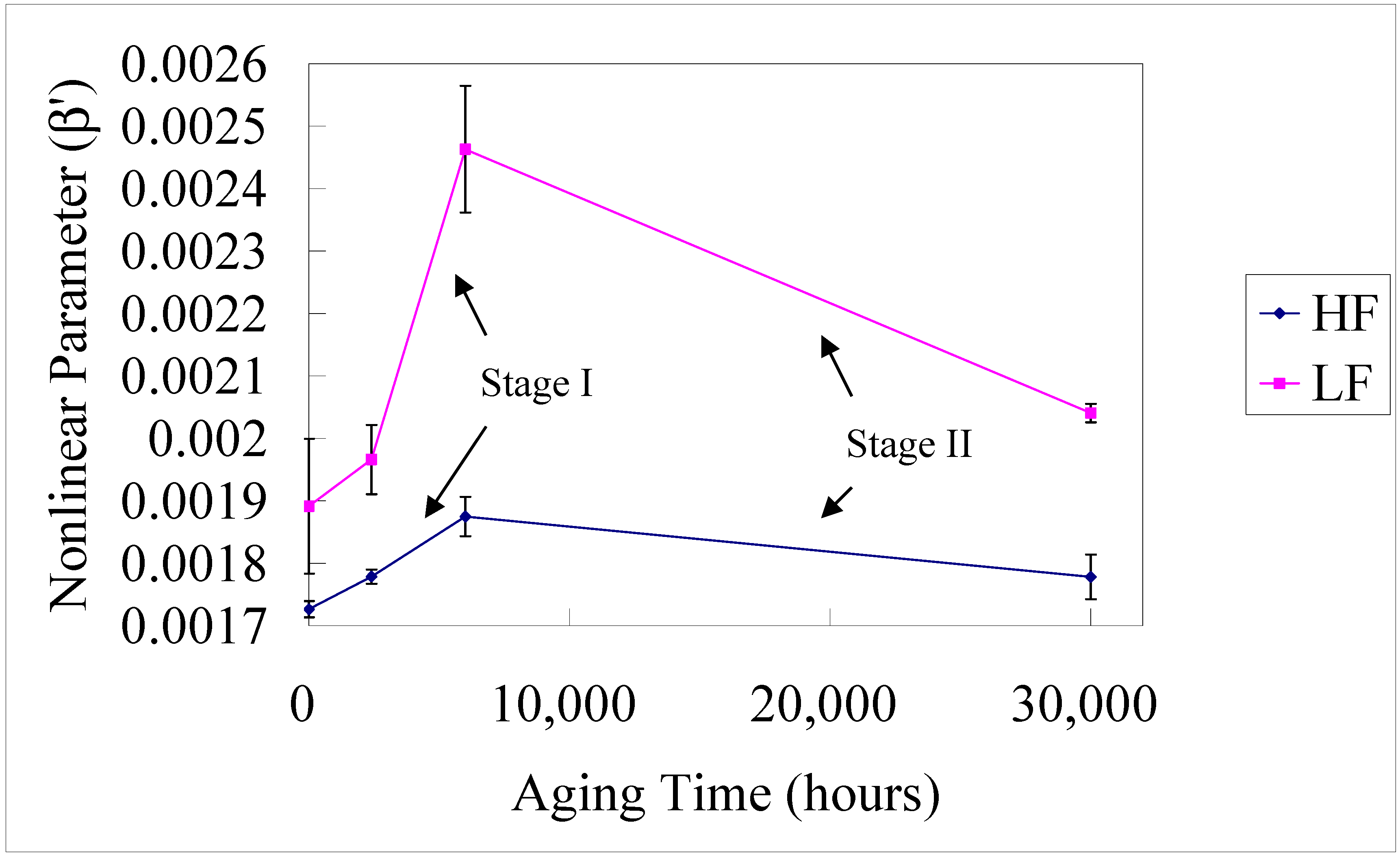
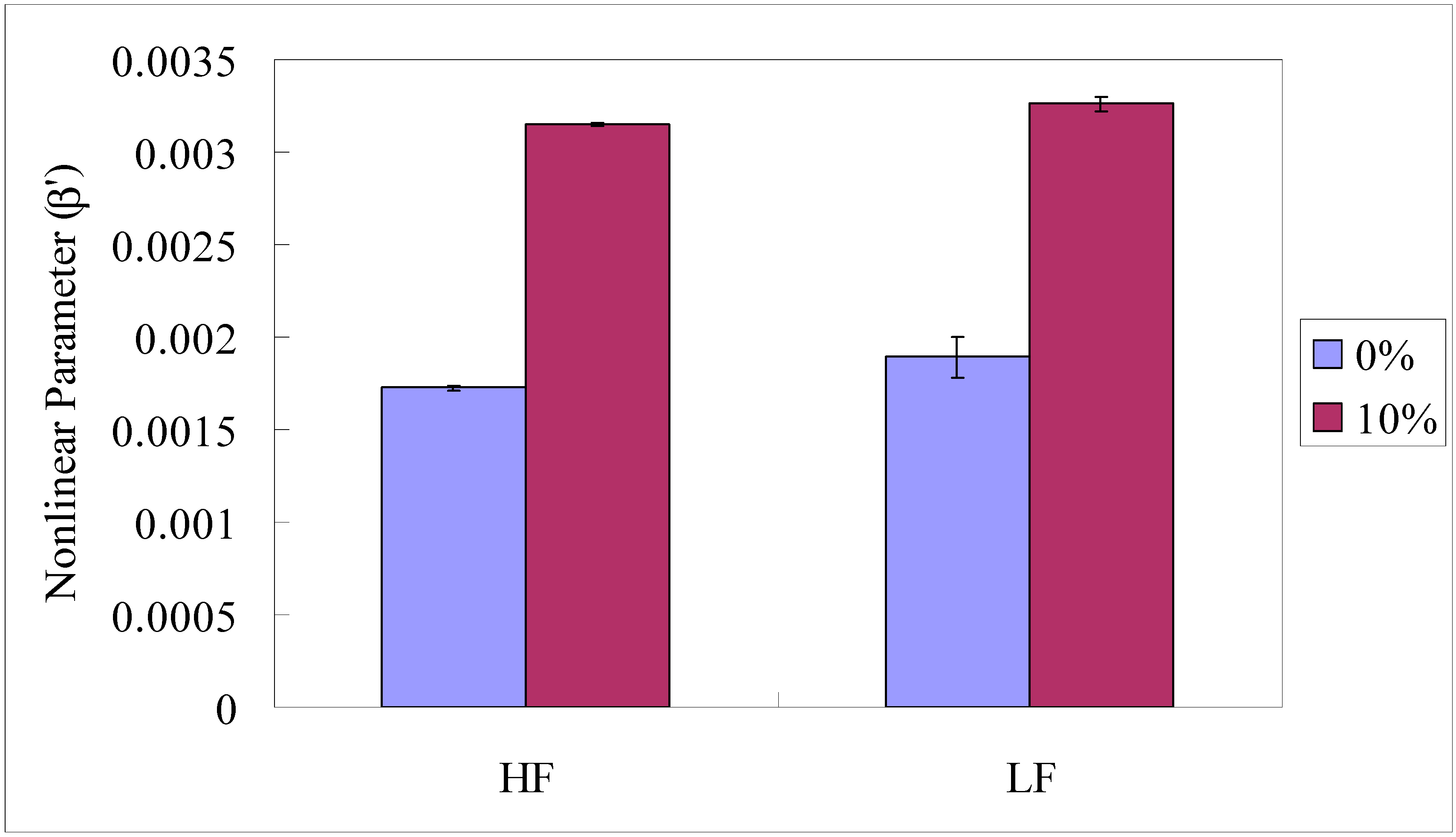
| C | Cr | Ni | Si | Mn | P | S | Fe | |
|---|---|---|---|---|---|---|---|---|
| LF | 0.048 | 18.79 | 8.67 | 0.42 | 1.2 | 0.067 | 0.005 | Bal |
| HF | 0.045 | 21.66 | 8.44 | 0.44 | 1.1 | 0.063 | 0.007 | Bal. |
| Times | Weight (g) |
|---|---|
| 1 | 2000.2 |
| 2 | 1999.6 |
| 3 | 2009.5 |
| 4 | 2005.0 |
| 5 | 1998.8 |
| 6 | 2006.5 |
| 7 | 2005.6 |
| 8 | 2002.4 |
| 9 | 2004.5 |
| 10 | 2002.5 |
| Average | 2003.5 |
© 2020 by the authors. Licensee MDPI, Basel, Switzerland. This article is an open access article distributed under the terms and conditions of the Creative Commons Attribution (CC BY) license (http://creativecommons.org/licenses/by/4.0/).
Share and Cite
Lin, Y.-J.; Yang, C.-H.; Huang, J.-Y. Influence of Microstructural Changes’ Effects on the Linear and Nonlinear Ultrasonic Parameters of Cast Stainless Steels. Appl. Sci. 2020, 10, 3476. https://doi.org/10.3390/app10103476
Lin Y-J, Yang C-H, Huang J-Y. Influence of Microstructural Changes’ Effects on the Linear and Nonlinear Ultrasonic Parameters of Cast Stainless Steels. Applied Sciences. 2020; 10(10):3476. https://doi.org/10.3390/app10103476
Chicago/Turabian StyleLin, Yu-Ju, Che-Hua Yang, and Jiunn-Yuan Huang. 2020. "Influence of Microstructural Changes’ Effects on the Linear and Nonlinear Ultrasonic Parameters of Cast Stainless Steels" Applied Sciences 10, no. 10: 3476. https://doi.org/10.3390/app10103476
APA StyleLin, Y.-J., Yang, C.-H., & Huang, J.-Y. (2020). Influence of Microstructural Changes’ Effects on the Linear and Nonlinear Ultrasonic Parameters of Cast Stainless Steels. Applied Sciences, 10(10), 3476. https://doi.org/10.3390/app10103476






